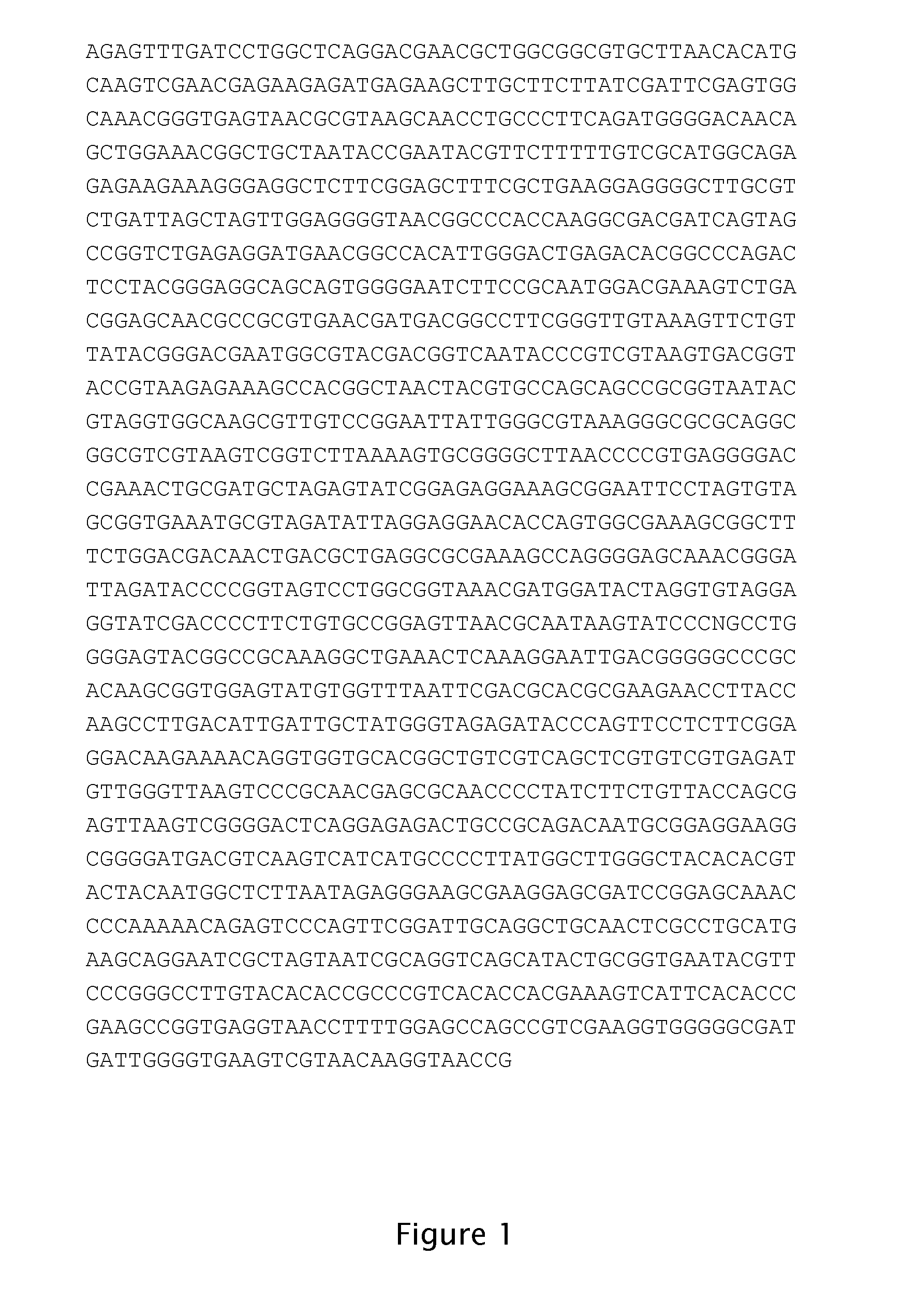Compositions and methods for detecting bv-associated bacterial nucleic acid
a nucleic acid and bacterial technology, applied in the field of compositions and methods for detecting bv-associated bacterial nucleic acid, can solve the problems of pelvic inflammatory disease, increased risk of human immunodeficiency virus infection, and low birth weigh
- Summary
- Abstract
- Description
- Claims
- Application Information
AI Technical Summary
Benefits of technology
Problems solved by technology
Method used
Image
Examples
example 1
Reagents
[0122]Various reagents are identified in the examples below. The formulations and pH values (where relevant) of these reagents were as follows.
[0123]A “Lysis Buffer” contains 15 mM sodium phosphate monobasic monohydrate, 15 mM sodium phosphate dibasic anhydrous, 1.0 mM EDTA disodium dihydrate, 1.0 mM EGTA free acid, and 110 mM lithium lauryl sulfate, pH 6.7.
[0124]A “Urine Lysis Buffer” contains 150 mM HEPES free acid, 294 mM lithium lauryl sulfate, 57 mM lithium hydroxide monohydrate, 100 mM ammonium sulfate, pH 7.5.
[0125]A “Target Capture Reagent” contains 250 mM HEPES free acid dihydrate, 310 mM lithium hydroxide monohydrate, 1.88 M lithium chloride, 100 mM EDTA free acid, 2 M lithium hydroxide to pH 6.4, and 250 μg / ml 1 micron magnetic particles Sera-Mag™ MG-CM Carboxylate Modified (Seradyn, Inc.; Indianapolis, Ind.; Cat. No. 24152105-050450) having oligo(dT)14 covalently bound thereto.
[0126]A “Wash Solution” contains 10 mM HEPES free acid, 6.5 mM sodium hydroxide, 1 mM E...
example 2
Initial Amplification Oligonucleotide Concentration Optimization
[0137]In this example, two amplification oligonucleotides (SEQ ID NOs. 15 and 18) specific for Megasphaera elsdenii were tested at three different concentrations (10, 20, 30 picomoles (pmol) per reaction) using 0, 1, 10, 100, 1000, and 10000 colony forming units (CFU) of M. elsdenii cells (ATCC No. 17752) per milliliter (mL) of Lysis Buffer. The first 27 bases of SEQ ID NO: 18 was a T7 promoter sequence. Additional oligonucleotides included two target capture probes (SEQ ID NOs. 1 and 2) and a detection probe (SEQ ID NO:24 with an acridinium esther (AE) incorporated using a linker positioned between bases 11 and 12). The amplification oligonucleotides were evaluated using (1) Target Capture, described in Weisburg et al., U.S. Pat. No. 6,110,678 (the contents of which are incorporated by reference herein); (2) Transcription-Mediated Amplification (TMA), described in Kacian et al. in U.S. Pat. Nos. 5,399,491 and 5,480,784...
example 3
Refined Amplification Oligonucleotide Concentration Optimization
[0139]In this example, the concentrations of the two amplification oligonucleotides (SEQ ID NOs. 15 and 18) described in Example 2 were further optimized The target capture probes, detection probe, and procedures were also the same as those described in Example 2. The concentration of each amplification oligonucleotide ranged from 12 pmol per reaction to 53 pmol per reaction. The amplification oligonucleotides were evaluated using M. elsdenii cells (ATCC No. 17752) at 1000 CFU per mL of Lysis Buffer. The negative control contained 30 pmol per reaction of each amplification oligonucleotide and Lysis Buffer without any bacteria cells. Five replicates were tested for each prime concentration combination and ten replicates were tested for the negative control. The results are summarized in Table 2, below and indicate that the optimal primer concentrations were 22.5 pmol per reaction for SEQ ID NO:18 and 53 pmol per reaction...
PUM
 Login to View More
Login to View More Abstract
Description
Claims
Application Information
 Login to View More
Login to View More - R&D
- Intellectual Property
- Life Sciences
- Materials
- Tech Scout
- Unparalleled Data Quality
- Higher Quality Content
- 60% Fewer Hallucinations
Browse by: Latest US Patents, China's latest patents, Technical Efficacy Thesaurus, Application Domain, Technology Topic, Popular Technical Reports.
© 2025 PatSnap. All rights reserved.Legal|Privacy policy|Modern Slavery Act Transparency Statement|Sitemap|About US| Contact US: help@patsnap.com

